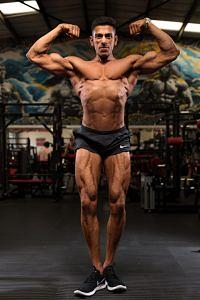What Do I Mean By This?
Having said that, I understood the nuances of this aspect of training after years of working out. I know what I like and what type of training schedule works for me. For a beginner the most important thing is to stay consistent and stick to a training plan so you can get the results you seek and enjoy steady progress.
- Adherence
- Progression
- Do you prefer pumping up with high reps, or do you hate the idea of going above 6-8 reps?
- Do you like using intensity methods like drop sets and forced reps?
- Do you enjoy tracking your workouts with logbooks?
- Do you get bored when doing lots of sets?
- Do you like training one body part and smashing it up, or do you prefer grouping body parts together and training them more frequently?
Example A

1 | Bench Press | 3 | 4-6
2 | Neutral Grip Chin Up | 3 | 4-6
3 | Low Incline DB Press | 3 | 6-8
4 | Barbell Rows | 3 | 6-8
5 | Standing Military Press | 3 | 6-8
6 | Underhand Grip Pulldown | 3 | 6-8
Example B
1 | Incline Bench Press | 1,1 | 4-6, 6-8
2 | Barbell Rows | 2 | 6-8
3 | Low Incline DB Press | 2 | 6-8
4 | Neutral Grip Chin Ups | 1,1 | 4-6, 6-8
5 | Standing Hammer Curls | 2 | 8
6 | Dips | 2 | Max reps
7 | DB Shrugs | 2 | 8
Example C
1 | Low Incline DB Press – Last set double drop set | 4 | 8
2 | Flat Bench Press – Last set rest-paused | 3 | 10
3A | Squeeze DB Press – Superset | 4 | 10-15
3B | Cable Flies – Superset | 4 | 10-15
4 | Dips | 3 | Max BW reps
5 | Seated Lateral Raises – Last set triple drop into partials | 3 | 10-15
6 | Bent Over Rear Delt Raises | 3 | 12
7 | Front Plate Raises | 1 | 100
8 | Machine Shoulder Press | 3 | 20


.png)
.png)
.png)